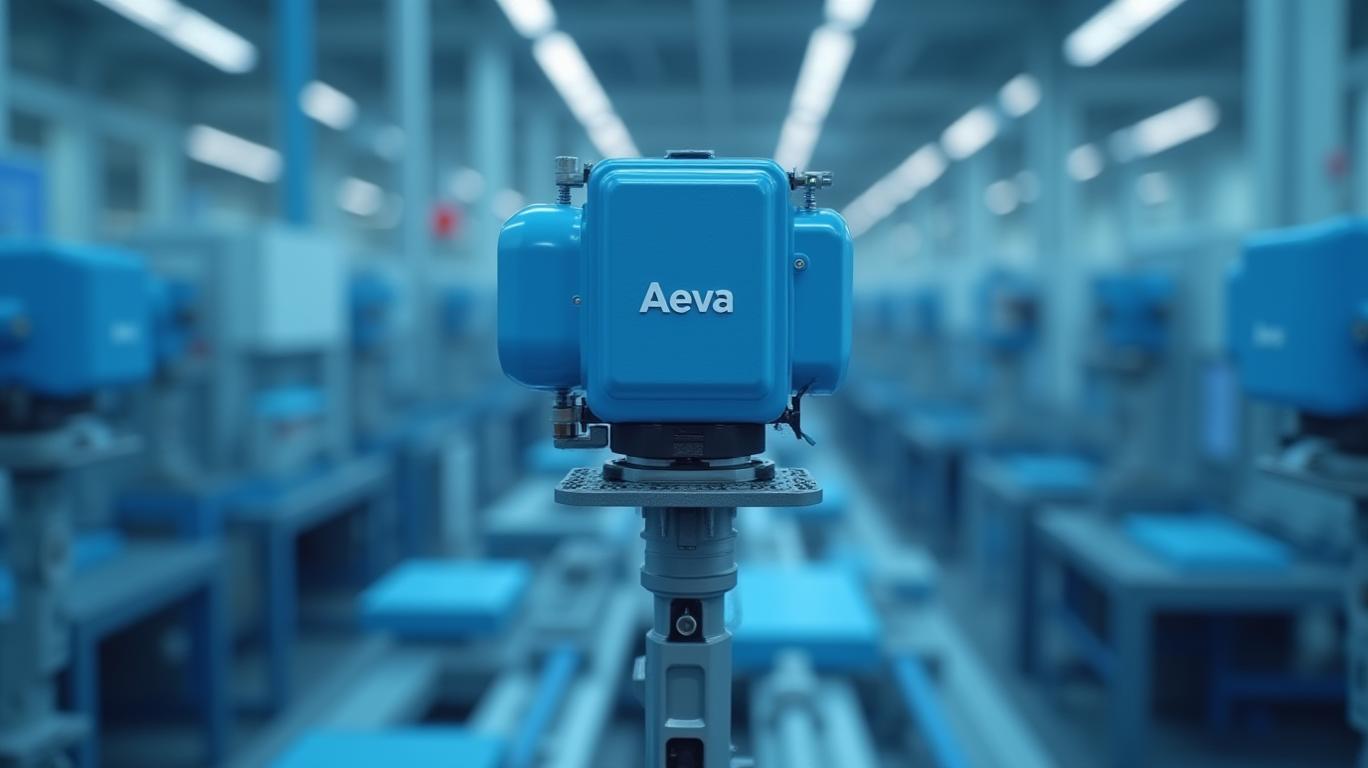Aeva's LiDAR: The Unseen Engine Behind the $28B Automation Revolution
The world is on the brink of a $28 billion battery metals
, fueled by decarbonization mandates and supply chain reshoring. At the heart of this transformation lies industrial automation, a sector where Aeva Technologies (NASDAQ: AEVA) is quietly positioning itself as a critical enabler. With its proprietary FMCW LiDAR technology, Aeva is now the linchpin connecting EV manufacturing, smart infrastructure, and advanced robotics—a convergence of trends that could make its 2025 revenue targets a conservative floor for its growth trajectory.
Revenue Targets Meet Strategic Overload
Aeva’s 2025 revenue targets of $15–$18 million—a 70–100% jump over 2024—seem modest on paper. But this masks a far more aggressive play: leveraging its $50 million partnership with a Global Fortune 500 tech subsidiary to penetrate untapped markets. This collaboration, which includes a 6% equity stake and Tier-2 manufacturing support, isn’t just about capital. It’s a strategic alliance to scale production for automotive, industrial, and consumer LiDAR applications—sectors where demand is exploding.
Consider the Eve 1D, Aeva’s industrial sensor for laser displacement. With SICK AG and LMI Technologies already ordering over 1,000 units, this product is targeting the $4 billion laser displacement market, where top competitors hold just 60% share. By 2025, Aeva aims to capture a slice of this market, using its sensor’s 100-micron precision to disrupt industries from semiconductor manufacturing to logistics automation.
EVs, Autonomy, and BYD’s Unseen LiDAR Play
While Aeva’s name isn’t yet linked to BYD, its technology is already embedded in the EV revolution’s backbone. The company’s partnership with Daimler Truck’s Torc to supply Atlas 4D LiDAR to autonomous Freightliner trucks signals a path to supply chains like BYD’s. As BYD scales its EV and battery production, the need for LiDAR-enabled automated guided vehicles (AGVs) and high-precision robotic arms will surge—a market Aeva is primed to dominate through its Eve 1D.
Meanwhile, the automotive sector’s shift to in-cabin LiDAR—a partnership Aeva is developing with an unnamed industry leader—could redefine safety standards in autonomous vehicles. This technology’s minimal design footprint and long-range detection (critical for highway speeds) positions Aeva to capture a slice of the $2.5 billion automotive LiDAR market, which is projected to grow at 21% CAGR through 2030.
John Deere’s Autonomy Boom and Aeva’s Hidden Role
John Deere’s 2025 autonomy rollout, featuring Lidar-equipped tractors and dump trucks, is a harbinger of agricultural automation’s $12 billion market opportunity. While Aeva isn’t explicitly named in Deere’s supply chain, its Atlas 4D LiDAR—which provides simultaneous velocity and position data—is precisely what autonomous machinery needs to navigate complex environments. As Deere scales its autonomous fleet, Aeva stands to benefit indirectly, but the real prize is the industrial robotics sector, where Eve 1D’s precision could become a de facto standard.
Infrastructure and the Quantum of Decarbonization
Aeva’s partnership with Sensys Gatso to provide LiDAR for smart traffic systems exemplifies its play in infrastructure modernization. With governments globally investing in $1.2 trillion in smart city projects by 2030, Aeva’s technology is already securing a foothold. While Welinq’s quantum storage remains unmentioned in Aeva’s disclosures, its role in enabling L4 autonomous shuttles (via Inyo Mobility) ties it to the broader $28 billion battery metals boom, as these vehicles rely on precise LiDAR for navigation in urban environments.
Risks and Near-Term Catalysts
Aeva’s Q1 2025 revenue of $3.4 million underscores execution risks—cash burn remains high, and hitting full-year targets requires accelerating sales in Q3/Q4. But two catalysts could shift sentiment:
1. “Aeva Day” on July 31, 2025: Aeva will likely unveil product roadmaps and partnerships, potentially unlocking institutional investor interest.
2. Tier-2 Manufacturing Scaling: The Fortune 500 collaboration’s production support could reduce costs and accelerate time-to-market for its sensors, easing liquidity concerns.
Why Buy Now?
Aeva is a high-leverage play on three secular trends:
- Decarbonization: EV and robotics adoption are mandating LiDAR’s precision.
- Supply Chain Reshoring: U.S./European manufacturing hubs need automation tools like Eve 1D.
- AI-Driven Robotics: LiDAR’s role in enabling real-time perception for AI systems is irreplaceable.
At a $206 million liquidity runway and with a $50 million partnership reducing dilution, Aeva is uniquely positioned to scale. Investors who buy now gain exposure to a company that’s not just a supplier, but a technology architect of the next industrial revolution.
Action Item: Aeva’s stock is primed to surge if it delivers on its Q3 milestones. With a $50 million war chest and partnerships unlocking multi-billion markets, this is a buy on dips below $10/share.
The LiDAR revolution isn’t just about seeing the road ahead—it’s about owning it. Aeva’s 2025 could be the year it does just that.

Comments
No comments yet